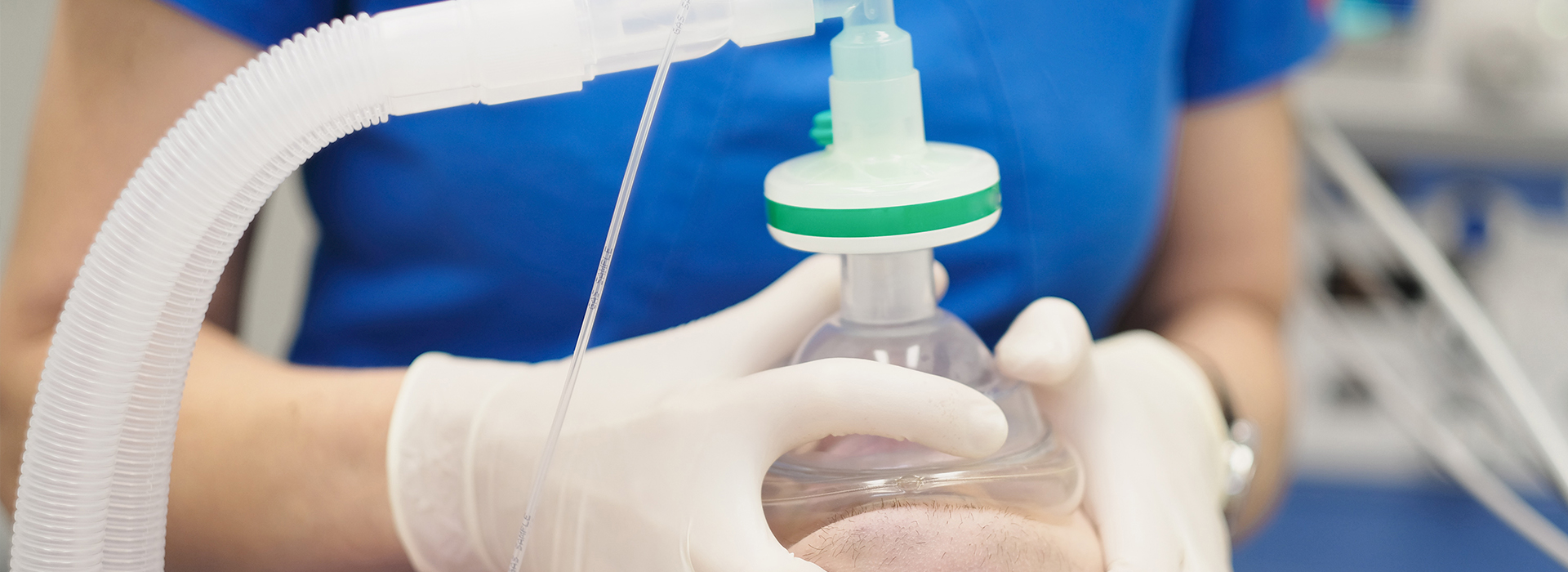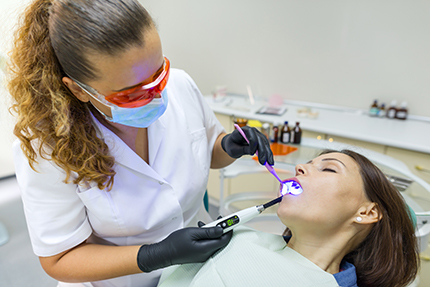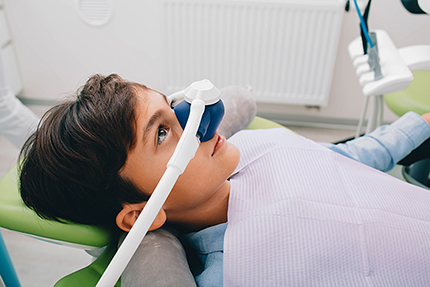
Dental fear and anxiety are common — affecting millions of adults and children — and they can create real barriers to routine care and necessary treatment. If visiting the dentist fills you with dread, sedation dentistry can change that experience. At the office of Lesley Holloway the Dentist, our team combines proven sedation techniques with attentive, safety-focused care so patients can get the dentistry they need without the stress.
When anxiety keeps someone away from routine exams or prevents completion of important dental work, oral health can decline and small problems can become larger ones. Sedation dentistry is not about “putting people to sleep” as much as it is about creating a calm, manageable state so care is comfortable, efficient, and safer for everyone involved. Most patients find that sedation helps them tolerate procedures they once avoided.
Every sedation plan begins with an open conversation. We review medical history, discuss previous experiences, and tailor an approach that respects each patient’s comfort level and clinical needs. Throughout treatment you remain under careful monitoring by trained clinicians who prioritize both relaxation and safety.
This page explains how sedation works, who benefits most, and the office-based options commonly used today. Our goal is to help you make an informed decision about whether sedation dentistry is right for you or a family member.
Sedation dentistry is designed to reduce fear and physical tension so patients can sit comfortably through procedures that might otherwise feel overwhelming. Depending on the method chosen, sedation can produce a mild calming effect, a deeper sense of relaxation, or a state where time and awareness are diminished. The result is a more positive experience for both patients and clinicians.
Importantly, sedation is used alongside local anesthesia. While a local anesthetic blocks pain at the treatment site, sedation addresses the emotional and physiological responses to care — heart rate, breathing, and the feeling of being on edge. Combined, these approaches allow us to work precisely with minimal discomfort and fewer interruptions.
Sedation can also make longer or more complex procedures feel shorter and less taxing. Patients often report feeling pleasantly drowsy or pleasantly unaware of most details, while still being able to follow simple instructions when necessary. Because monitoring and protocols are strictly observed, sedation given in a dental office can be both comfortable and safe for many patients.

Sedation is not one-size-fits-all; it's a tool that helps specific groups of patients receive care more effectively. It’s especially helpful for people who experience intense anxiety, have had traumatic dental experiences, or who find routine visits intolerable. By reducing stress, sedation enables these patients to complete preventive and restorative treatments they might otherwise avoid.
Sedation is also valuable for patients who require lengthy or complex treatment. When multiple procedures must be completed in a single visit, sedation helps maintain comfort and cooperation so work can be done more efficiently and with fewer appointments. This can be a practical solution for patients with limited availability or those who find repeated visits difficult.
Additionally, sedation supports patients with physical or neurological conditions that make staying still challenging, as well as those with a strong gag reflex or heightened sensitivity. For caregivers and clinicians, the calmer, more controlled environment produced by appropriate sedation creates safer conditions for precise dental work.
Dental phobia — For patients whose fear is so strong it prevents necessary care, sedation can remove the emotional barrier and allow treatment to proceed.
Procedure-specific anxiety — Some patients feel anxious about particular treatments (extractions, root canals, implants); sedation can make those appointments manageable and less intimidating.
Extensive restorative work — Long visits are easier to tolerate under sedation, letting clinicians accomplish more in a single appointment without causing undue stress.
Strong gag reflex — Sedation can reduce the reflexive response that interferes with procedures, improving comfort and access for the provider.
Sensitivity and sensory issues — Patients with hypersensitive teeth or heightened sensory responses often find sedation helps them remain relaxed when instruments, suction, and sprays are used.
Patients with special needs — Young children, individuals with cognitive or physical disabilities, and some patients with medical conditions may benefit when sedation permits safe, effective treatment.

Selecting an appropriate sedation method starts with a careful review of health history, medications, allergies, and the nature of the planned dental work. We consider breathing and cardiovascular health, sleep apnea, pregnancy status, and other factors that influence both safety and effectiveness. This personalized evaluation helps determine an option that minimizes risk while maximizing comfort.
Communication is central to the process. Expect a clear explanation of what to expect before, during, and after sedation, including any pre-appointment instructions such as fasting or changes to medication timing. Our team will also describe monitoring procedures so you understand how your wellbeing will be maintained throughout the visit.
Sedation plans are collaborative: we discuss goals, answer concerns, and plan for recovery. If an escort is required after certain types of sedation, we’ll make that clear beforehand so patients arrive prepared. The overall objective is a plan that respects medical safety and delivers a calm, controlled dental experience.
Understanding the difference between conscious sedation and general anesthesia helps set realistic expectations. Conscious sedation allows patients to remain breathing independently and to respond to verbal cues while experiencing significant relaxation or amnesia for the procedure. It is commonly used in dental offices and, when performed by trained professionals, is a safe choice for many cases.
General anesthesia, by contrast, induces a deeper state in which the patient is fully unresponsive and requires advanced airway support and monitoring. It is typically administered in a hospital or surgical center by an anesthesiologist and is reserved for situations where office-based sedation would not provide adequate safety or comfort.
When conscious sedation is appropriate, dentists typically use inhaled, oral, or intravenous methods. Each offers different levels of control and onset time, and all are selected to match the patient’s needs and the procedure’s complexity. Regardless of the method, monitoring equipment and trained staff are present to track vital signs and ensure safe recovery.
Nitrous oxide, often called “laughing gas,” is a mild, fast-acting inhaled sedative mixed with oxygen. It reduces anxiety while leaving patients awake and able to breathe without assistance. The effects wear off quickly once the gas is stopped, allowing a rapid return to baseline awareness.
Oral sedation involves a prescribed medication taken before the appointment to produce a moderate calming effect. It is convenient for many patients and can significantly reduce anxiety, though it typically requires an escort home because of lingering drowsiness.
IV sedation delivers medication directly into a vein, allowing a rapid onset and precise control over the depth of sedation. It is appropriate when deeper relaxation is needed or when adjustments are required during longer procedures. Specific pre-appointment instructions, such as fasting, are provided for safety, and an escort is required afterward.
No matter which method is chosen, monitoring and recovery protocols are in place to make sure each patient returns to a stable, comfortable state before leaving the office. Our team follows evidence-based guidelines and maintains clear communication throughout the visit so patients and their companions know what to expect.
If dental anxiety, sensitivity, or the need for extensive treatment has kept you from getting the care you need, sedation dentistry can be a practical, compassionate solution. At the office of Lesley Holloway the Dentist, we tailor sedation approaches to each patient’s health profile and treatment goals to deliver safe, respectful care. Contact us to learn more and discuss whether sedation dentistry is right for you.
Sedation dentistry uses medications to help patients relax before and during dental procedures. It ranges from mild relaxation to deeper states of decreased awareness while the patient continues to breathe independently. Sedation is intended to reduce fear, control physiological responses like elevated heart rate, and make treatment more comfortable for people who would otherwise avoid dental care.
Office-based sedation is typically combined with local anesthesia so that the treatment site is numbed while the sedative addresses anxiety and stress. The goal is to create a calm, controlled environment that supports safe, efficient dental work. Decisions about sedation are individualized to match a patient’s health, the planned procedure, and personal comfort preferences.
Good candidates include patients with significant dental anxiety, a history of traumatic dental experiences, or a strong gag reflex that interferes with care. Patients facing long or complex procedures, people with certain physical or neurological conditions that make it difficult to remain still, and those who avoid care due to fear may also benefit. A thorough medical history and exam determine whether sedation is appropriate for each person.
Age alone is not always a disqualifier, but the plan must consider factors such as breathing or cardiovascular health, sleep apnea, pregnancy, and current medications. For children and patients with special needs, the team evaluates developmental and behavioral factors to select the safest option. The emphasis is always on tailoring care to minimize risk while maximizing comfort and cooperation.
Common office-based sedation methods include inhaled nitrous oxide, oral sedatives, and intravenous (IV) sedation. Nitrous oxide produces mild, rapidly reversible relaxation and is often used for shorter visits or as an adjunct for nervous patients. Oral sedatives are taken before the appointment to induce moderate relaxation, while IV sedation allows quick onset and fine control over sedation depth for longer or more invasive procedures.
Each method has different monitoring and recovery requirements, and some require an escort home afterward. All techniques are used alongside local anesthesia to manage pain at the treatment site. The dental team will explain the expected effects, monitoring procedures, and any necessary pre-appointment instructions so patients know what to expect.
Choosing a sedation option begins with a detailed review of medical history, current medications, allergies, and the nature of the planned dental work. The team assesses respiratory and cardiovascular health, sleep apnea risk, and other conditions that influence safety and effectiveness. Patient preference, previous responses to sedation, and the required level of cooperation during treatment are also important factors.
Discussion with the dentist and clinical staff clarifies goals, potential risks, and recovery expectations so the plan is collaborative and transparent. If a particular method poses concerns, the team will suggest alternatives or refer for hospital-based anesthesia when necessary. The objective is a personalized plan that balances comfort, safety, and the clinical needs of the procedure.
When performed by trained clinicians following evidence-based protocols, sedation dentistry is generally safe for appropriately selected patients. Safety depends on a careful health evaluation, correct dosing, appropriate monitoring equipment, and staff trained in sedation and emergency response. Office monitoring typically includes observation of breathing, oxygen levels, blood pressure, and heart rate throughout the procedure.
Recovery protocols ensure patients return to a stable state before discharge, and some forms of sedation require a responsible escort to drive the patient home. The practice maintains clear communication about pre- and post-procedure instructions to reduce risks. If a patient’s medical history indicates higher risk, the dentist may recommend treatment under the care of an anesthesiologist in a surgical facility.
Preparation varies by sedation type but commonly includes guidance about eating and drinking, medication adjustments, and arranging for a companion to drive you home when required. For nitrous oxide, fasting is usually not necessary, but for oral or IV sedation the team may instruct you to avoid food or drink for several hours beforehand. Be sure to bring a list of current medications and any relevant medical records to the appointment.
Communicate openly about past reactions to medications, history of sleep apnea, and any respiratory or cardiac conditions so the staff can plan safely. Follow the practice’s pre-appointment instructions closely and plan for a restful recovery period after treatment. If you have concerns about transportation or post-procedure care, discuss them ahead of time so the team can offer practical guidance.
Recovery depends on the sedation type used; nitrous oxide typically wears off within minutes, while oral and IV sedatives can cause drowsiness for several hours. Patients are monitored until vital signs are stable and cognitive function has returned to an acceptable level for safe discharge. For moderate or deep sedation, a responsible adult should accompany the patient and remain available for the first 24 hours if needed.
Common after-effects include mild grogginess, slower reaction times, and temporary memory gaps about the procedure. The dental team provides specific post-operative instructions regarding activity, driving, eating, and medication management. If unexpected symptoms occur after leaving the office, contact the practice promptly for guidance.
Yes, children and patients with special needs can often benefit from sedation when it is appropriate and carefully planned. The decision is based on developmental level, medical history, the child’s or patient’s ability to cooperate, and the complexity of the dental work. Pediatric dosing, specialized monitoring, and staff experience with behavioral management are essential considerations.
For some children or individuals with significant medical or behavioral concerns, treatment in a hospital setting with an anesthesiologist may be the safest option. The dental team will discuss all available approaches, explain the risks and benefits, and coordinate care with caregivers and medical providers as needed. The priority is to provide effective, compassionate treatment in the safest environment.
Sedation and local anesthesia serve complementary roles: local anesthetics block pain at the treatment site while sedatives reduce anxiety, awareness, and the body’s stress responses. Combining the two allows the clinician to perform procedures precisely without causing discomfort or agitation. This dual approach can reduce the need for repeated injections or interruptions during complex treatments.
The team selects anesthetic techniques based on the procedure, patient sensitivity, and medical considerations to optimize comfort and safety. Patients are informed about what sensations to expect and how pain will be managed during and after the appointment. Clear post-procedure instructions help control pain and support healing once the sedative effects have worn off.
Start by describing your concerns, past dental experiences, and any medical conditions or medications when you call or during your initial exam. The team at the office of Lesley Holloway the Dentist will review your health history, explain available sedation methods, and outline monitoring and recovery procedures so you can make an informed decision. Open communication about goals and fears helps the clinician tailor a plan that matches both your comfort level and clinical needs.
Ask specific questions about what to expect before, during, and after sedation, including pre-appointment instructions and whether an escort is required. If you have sleep apnea, heart or lung conditions, or are pregnant, mention these early so the team can evaluate safety and recommend alternatives if needed. A collaborative discussion ensures sedation is used responsibly to support a calm and effective dental experience.
Quick Links
Contact Us